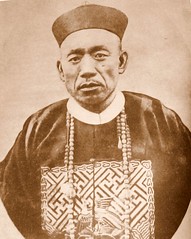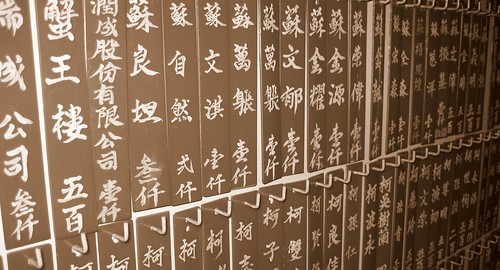DON CARLOS PALANCA TAN QUIEN-SIEN
Written by Senor Enrique blogspot His life was a classic rags-to-riches story: Born of a poor family in T’ung-an hsien, he migrated to the Philippines in 1844. Although starting out in a measly position in the textile business, through hard work, tenacity, and acquired connections, he prospered.
His life was a classic rags-to-riches story: Born of a poor family in T’ung-an hsien, he migrated to the Philippines in 1844. Although starting out in a measly position in the textile business, through hard work, tenacity, and acquired connections, he prospered.Only about twenty years after arriving in Manila, he had risen as a powerful leader in the Chinese community. His wealth stemmed from importing enterprises, which included sugar and rice. He was also involved in coolie brokerage. Besides the businesses that he presided over, there were many commercial ventures in which his investments raked in enormous profits.
When he converted to Catholicism, his baptismal sponsor was Colonel Carlos Palanca Y Gutierrez — a Spanish forces leader in the Franco-Spanish intervention of 1858-62 in Cohin, China. He then assumed the name of his godfather (padrino); changing it from Tan Quien-sien to Carlos Palanca Tan Quien-sien. He eventually became widely known as Don Carlos Palanca.
He attained the position of gobernadorcillo from 1875-77, and again some years later; serving as the interim gobernadorcillo in 1885 and 1889. And when not in office, he continued to move behind the scenes with undisputed power; an effective arbitrator of disputes as well. For his services as gobernadorcillo, Spain granted him the Medal of Civil Merit and the Grand Cross of Isabel the Catholic.
He was always active in community affairs and philanthropy; raising funds for the community hospital and even provided a building for it himself in 1891. His generous donations extended outside of the Chinese community. There were many exemplary accomplishments attached to his name — the abolishment of vice in the community, the end of police extortions of the Chinese; the abolition of the death penalty for crimes committed by Chinese; and through powerful connections in Spain, softened Spanish legislation on the Chinese
He played a major role in the community’s efforts to obtain a Chinese consulate in Manila during the 1880s and 1890s. When the Americans took control of the country in 1898, he provided the American troops with temporary lodging arrangements, as well as furnished them with coolies to build their barracks. Subsequently, he urged the Ch’ing government to negotiate with the United States for a Chinese consulate in Manila. When the consulate was established in 1899, the Ch’ing government appointed his son, Ignacio Palanca Tan Chueco, to the position of first consul.
When the Philippine Revolution broke out he chose to keep distance; not committing to either side. When the Spanish government charged a number of mestizos with conspiracy, he argued in behalf of some of them and helped secure their release, though his attitude toward the Chinese mestizos was one of contempt. Not a believer of inter-racial marriage, he sent his son to a school in China to thwart his filipinization.
The Spanish and Filipinos, on the other hand, regarded Don Carlos Palanca with mixed sentiments. Their pervasive perception of him was that of a master corrupter; one who would resort to extreme measures just to get what he wanted.
He was thought of as a man obsessed with becoming the Chinese consul. He did assume the interim role of which when his son’s return from China was delayed for several months; unable to immediately fulfill his appointment as consul.
There were speculations among the Filipino intellectuals that Jose Rizal modeled after Don Carlos Palanca his character of Chinaman Quiroga in El Filibusterismo. Jose Alejandrino, a friend of Rizal, confirmed that it was indeed the case. Alejandrino further claimed that Don Carlos Palanca approached Aguinaldo — when he was forming his revolutionary government — about the possibility of creating an opium monopoly.
Despite such controversies, he was, undoubtedly, a powerful force in the Chinese community during the late nineteenth century. When he died in 1901, a statue was erected in the Chinese cemetery as a tribute to his community service and philanthropy.
 Source:
Source:The Chinese in Philippine Life 1850-1898
By Edgar Wickberg
Ateneo de Manila University Press
Photo of Carlos Palanca credit: Fei-lu-pin Min-li-la Chung-hua Shang-hui san-shi chou-nien k’an ed. Huang Hsiao-ts’ang (Manila, 1936)


1 comment:
Magandang umaga po! Nabasa ko po ang post nyo tungkol kay Don Carlos Palanca. Pwede ko po bang i-post ito sa blog ko? Ilalagay ko po ang blog/site nyo as my source ganun din po sa mismong source ninyo. Aantayin ko po ang inyong sagot at makakaasa po kayo na hindi ko ipo-post ang inyong article unless na bigyan ninyo ako ng permiso.
Post a Comment